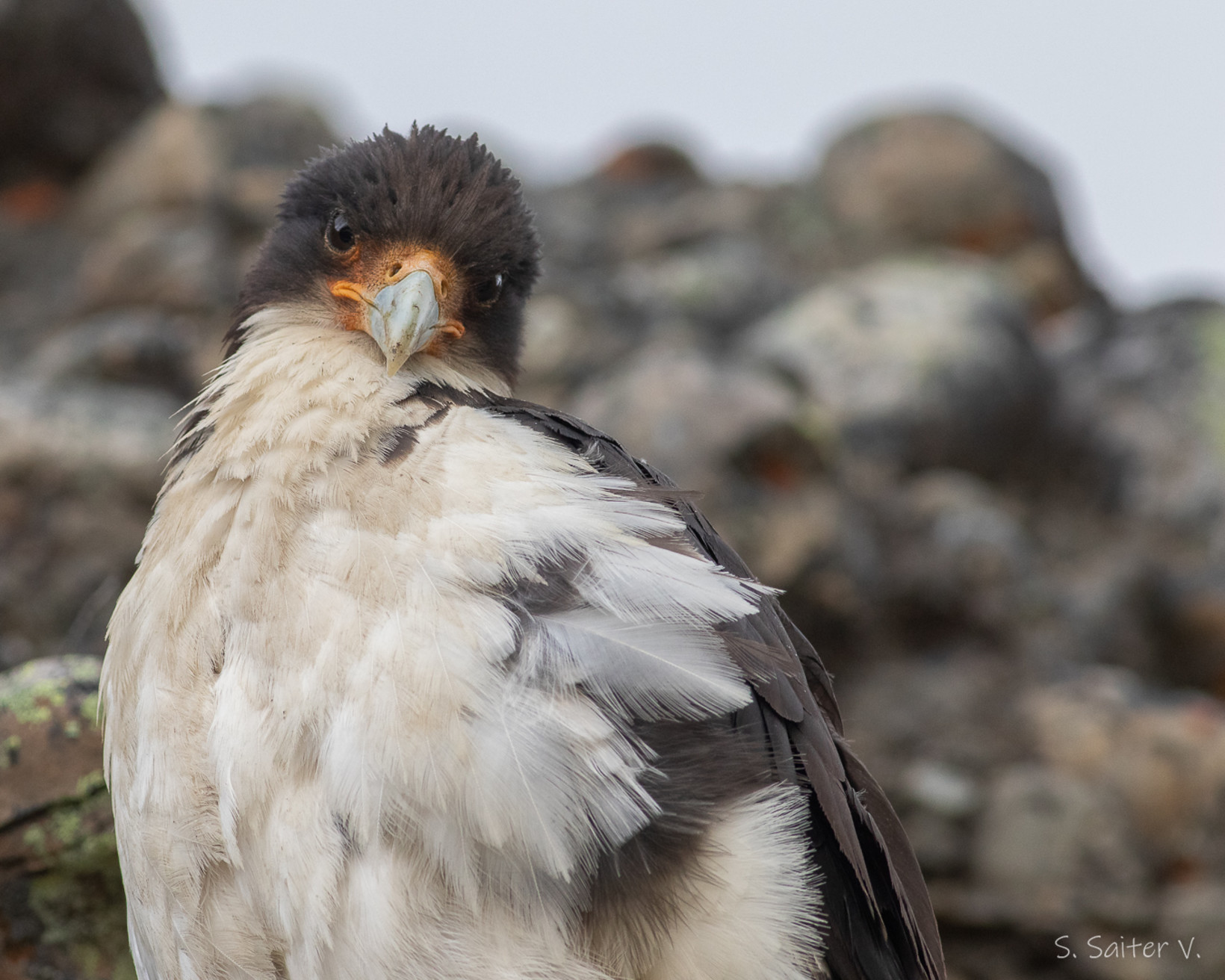White-throated Caracara. Latin name: Daptrius albogularis
Where to be observed
The White-throated Caracara is an annual resident (it doesn't migrate), and endemic to the Patagonian Andes of both Chile and Argentina.
In the Magallanes region, we can observe it from the Andean environments of the Patagonian steppe northeast of the Last Hope province to the native Nothofagus forests of southern Tierra del Fuego, the Beagle Channel, and the surrounding southern islands. It can be seen from sea level to 3,000 meters above sea level. It can be observed in the property of Estancia Laguna Amarga, especially when there is an abandoned kill, since the Caracara is a scavenger, just like the condor and the smaller, and more common Caracara, the Crested Caracara (Caracara plancus plancus).
Identification
It is a bird that stands out for its elegant bicolor plumage (black back and white belly), sought after and longed for by bird-watchers who come to visit the south of the American continent. Sometimes it approaches human settlements to look for food, as in the case of Estancia Cerro Guido and ranches in Sierra Baguales, as well as in Laguna Amarga, so it is not too suspicious of human presence.
The juvenile has a dark-tipped bill and dark brown plumage, darker and larger than a Chimango Caracara (Daptrius chimango), another scavenger.
Feeding
The White-throated Caracara is quite agile when flying, and is one of the first to dare to descend when it finds a puma kill, for example in property of the Estancia Laguna Amarga, making them a good messengers when looking for signs of pumas and their prey in this vast sector. It feeds on carrion as well as small mammals and insects such as beetles (Coleoptera) while roaming the ground.
Nesting
There is still not too much information about its nesting, but it has been observed that during summer it carries guanaco wool to assemble its nest (hidden in cavities of walls and cliffs in conglomerate rocks), just as the Crested Caracara does it with sheep's wool. They have also been observed carrying food, but more up-to-date information and details about the reproduction period of this special and little-known Patagonian bird of prey remains to be confirmed and collected.
Photo credits: Sebastian Saiter V.
